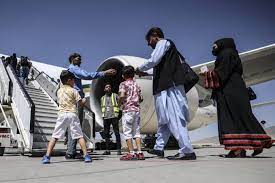In recent years, the global refugee crisis has highlighted the urgent need for effective integration strategies, with language education being a pivotal component. For refugees, learning English is not just about communication but is crucial for accessing services, finding employment, and building a new life in their host countries. Government grants have emerged as a powerful tool in transforming refugee language education, making it more accessible, inclusive, and effective. This article explores how these grants are revolutionizing refugee language learning and the impact they are having on communities around the world.
The Role of Government Grants in Language Education
Government grants play a crucial role in supporting language education programs designed for refugees. These grants provide essential funding that enables the development and expansion of programs tailored to the unique needs of refugee learners. By alleviating financial constraints, government grants facilitate the creation of resources, training of educators, and implementation of innovative teaching methods.
One of the most significant ways government grants impact refugee language education is by allowing organizations to offer free or subsidized language classes. For many refugees, financial instability is a major barrier to accessing quality education. Government funding helps bridge this gap, ensuring that refugees can learn English without the added burden of tuition fees.
Expanding Access to Language Resources
Government grants have enabled the development and distribution of a wide range of language learning resources specifically designed for refugees. These resources include textbooks, online platforms, and interactive tools that cater to various learning styles and levels. For instance, digital platforms funded by government grants offer interactive exercises and multimedia content that make learning English more engaging and effective.
In addition to digital resources, grants have supported the creation of physical learning materials such as bilingual dictionaries and cultural orientation guides. These materials are invaluable for refugees who may be unfamiliar with the local language and culture. By providing these resources, government grants help refugees overcome initial language barriers and build a solid foundation for further learning.
Training and Supporting Educators
Effective language education requires skilled educators who understand the unique challenges faced by refugee learners. Government grants often fund training programs for teachers, equipping them with the knowledge and skills needed to address the specific needs of refugee students. This includes understanding trauma-informed teaching practices, cultural sensitivity, and strategies for teaching English to non-native speakers.
Moreover, grants support the hiring of additional staff, such as language tutors and support workers, who can provide individualized assistance to refugees. This personalized approach helps address the diverse learning needs of refugees, ensuring that each student receives the support they need to succeed.
Innovative Teaching Methods
Government funding has also facilitated the adoption of innovative teaching methods that enhance the learning experience for refugees. For example, some programs use technology to create immersive language learning environments. Virtual reality (VR) and augmented reality (AR) tools can simulate real-life situations, allowing refugees to practice English in contexts they are likely to encounter in their daily lives.
Additionally, grants have supported the development of community-based learning initiatives. These programs often involve partnerships between local schools, non-profits, and community organizations to offer language classes in informal settings. This approach not only makes learning more accessible but also helps integrate refugees into their new communities by fostering social connections.
Measuring Impact and Success
The success of government-funded language education programs can be measured through various metrics, such as improved language proficiency, increased employment rates, and enhanced community integration. Many programs conduct regular assessments to track the progress of their students and adjust their approaches based on feedback.
Moreover, success stories from refugees who have benefited from these programs provide valuable insights into their impact. Personal testimonials often highlight how learning English has transformed their lives, enabling them to pursue education and career opportunities, connect with their communities, and build a sense of belonging in their new homes.
Future Directions and Challenges
While government grants have significantly improved refugee language education, there are still challenges to address. Ensuring that programs are inclusive and accessible to all refugees, including those with limited literacy or who speak less common languages, remains a priority. Additionally, sustained funding and support are essential to maintain and expand these programs over time.
Looking forward, there is potential for increased collaboration between government agencies, NGOs, and private sector organizations to enhance language education efforts. Innovations in technology and pedagogy, coupled with continued financial support, can further transform the way refugees learn English and integrate into their new societies.
Government grants have proven to be a transformative force in refugee language education, making it more accessible, inclusive, and effective. By funding free or subsidized classes, expanding access to resources, training educators, and supporting innovative teaching methods, these grants are helping refugees learn English and build a new life in their host countries. As we continue to navigate the global refugee crisis, ongoing support and innovation will be key to ensuring that all refugees have the opportunity to succeed and thrive.






